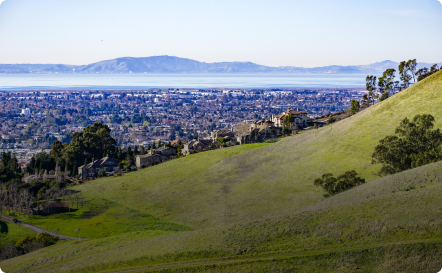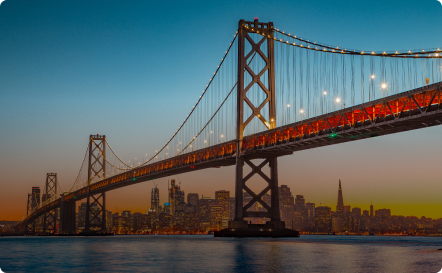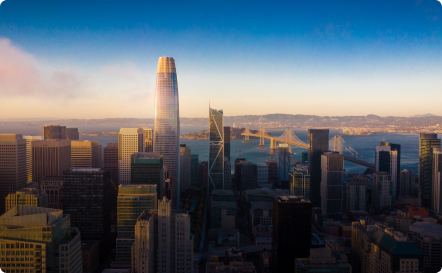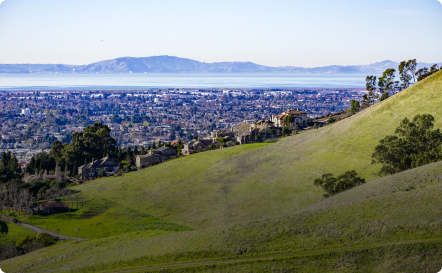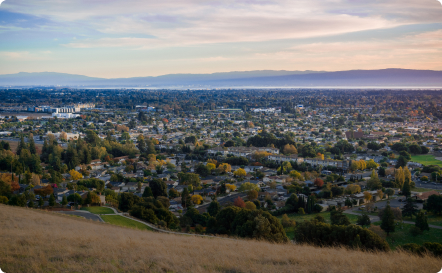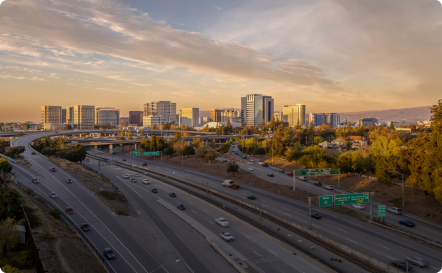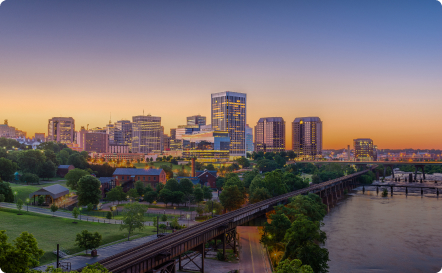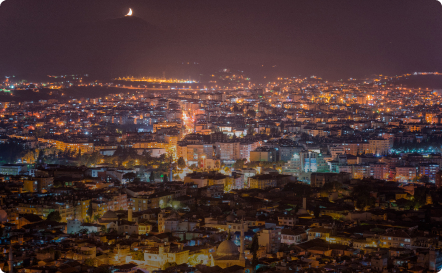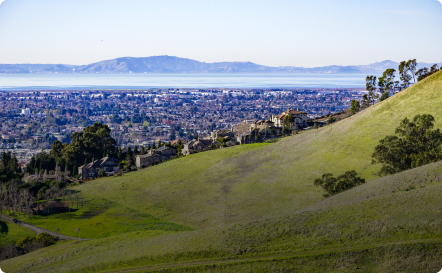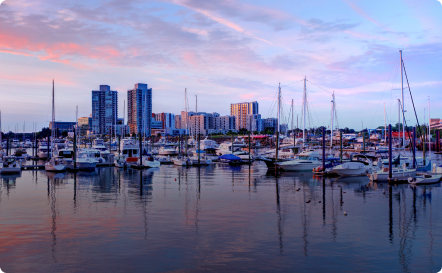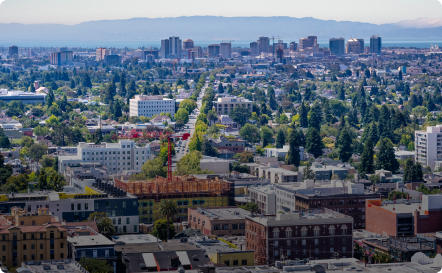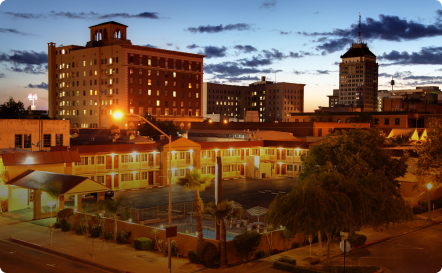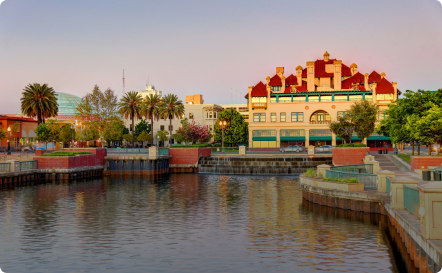Public transportation accidents in the Bay Area can cause serious injuries. This article explains the legal complexities of BART and Muni accident claims, including liability, statute of limitations, and potential damages. Learn how GJEL Accident Attorneys, your trusted bus accident lawyer, can help you seek justice and compensation.

At GJEL we have the experience to help victims who have been injured in bus accidents.
Our skilled bus accident lawyers are dedicated to ensuring you receive the compensation you deserve.
Here are a few reasons you should talk to us if you’ve been injured in a bus accident:
- We have a 99% Bus Accident case success rate
- We have recovered over $10 Million for our clients injured in bus accidents
- We will be with you every step of the way and help you through this difficult time
California Public Transportation Accident Attorney Serving Clients Throughout the Bay Area
Thousands of Bay Area residents, as well as visitors to the area, use the Bay Area Rapid Transit (BART) and Muni public transportation systems to get around San Francisco, Berkeley, and Oakland, as well as to commute to cities throughout the region. For most people who use public transit, the trips are safe and effective.
Indeed, residents of and visitors to the Bay Area regularly rely on Muni streetcars, buses, and trains to get from one location to another. According to the San Francisco Municipal Transportation Agency (SFMTA), the average daily Muni ridership totals more than 700,000. For BART, there are an average of 429,000 trips on weekdays and 126 million tri[s every year. During peak commute hours, a BART fact sheet indicates that almost 70,000 riders are traveling through the Transbay Tube in either direction.
Public transportation is popular in the Bay Area, but accidents do happen. Passengers and pedestrians can suffer serious and life-threatening injuries, and sometimes those injuries prove fatal. If you or someone you love got hurt in a public transit accident in the Bay Area involving Muni or BART vehicles, you should speak with an experienced Bay Area public transportation accident lawyer as soon as possible.
Examples of BART and Muni Accidents in the Bay Area
At GJEL Accident Attorneys, we handle a wide variety of personal injury cases involving mass transit and public transportation in the Bay Area, including but not limited to the following:
- BART or Muni passenger injured in a bus, train, or cable car crash;
- BART or Muni driver/operator injured in an accident;
- Motorist injured in a collision with BART or Muni bus, train, or cable car;
- Bicyclist injured in a collision with BART or Muni bus, train, or cable car;
- Pedestrian injured in a collision with BART or Muni bus, train, or cable car;
- Motorcyclist injured in a collision with BART or Muni bus, train, or cable car;
- Slip and fall accident at a BART or Muni station; and
- Assault at a BART or Muni station.
Common Injuries in Bay Area Public Transportation Accidents
Public transit accidents can cause many different types of injuries that can be disabling and life-threatening. For many people who get hurt in BART or Muni accidents in the Bay Area, the injuries are so serious that they require extensive medical treatment and suffer from temporary or permanent disabilities that prevent them from returning to work. Some of the most common types of public transit accident injuries include but are not limited to:
- Head trauma, including traumatic brain injuries (TBIs);
- Back injuries;
- Neck injuries;
- Spinal cord injuries (SCIs);
- Broken bones;
- Organ damage;
- Facial injuries and disfigurement;
- Loss of limb and amputation injuries; and
It is extremely important to seek medical attention for any injuries you sustain in a bus or train accident, and then follow up as soon as possible with an experienced Bay Area public transit accident attorney.
Causes of a BART or Muni Accident in the Bay Area
How do most BART or Muni accidents happen in the Bay Area? There are numerous causes of public transit accidents, and it may be possible for an injury victim to file a claim against more than one party. Some common causes of crashes include but are not limited to:
- BART or Muni operator error;
- Negligent motor vehicle driver who causes an accident involving a bus or train;
- Negligent bicyclist or pedestrian;
- Defective vehicle parts; and
- Damaged roadway.
When we talk about driver error, what kinds of mistakes can contribute to a serious crash? Common vehicle operator errors or negligence might include:
- Distracted driving, such as talking or texting on a cell phone;
- Aggressive driving, including speeding or running a red light or stop sign;
- Impaired driving, which can include driving under the influence of alcohol or other substances; and
- Drowsy or fatigued driving.
Statute of Limitations for a Bay Area Public Transit Accident Claim
The statute of limitations is the amount of time that a party has to file a lawsuit. The statute of limitations typically begins “running,” or the time window opens, as soon as a person gets hurt in an accident. When the time ends, or the statute of limitations “runs out,” a party cannot file a claim any longer. The statute of limitations for a Muni or BART accident is typically very short. In other words, you have a very limited period to file a lawsuit to seek financial compensation for your losses, or else you will be barred from filing a claim.
Under California law, the statute of limitations for a claim against government agencies is only six (6) months. As such, for any BART or Muni accidents, injury victims only have six months from the date of the accident to file a compensation claim. For other personal injury claims that are not against government agencies, the statute of limitations is two years.
Given that the statute of limitations for most BART and Muni accidents is only six months, it is extremely important to speak with a BART accident lawyer or Muni accident attorney about your case as soon as possible. Six months can go by extremely quickly when you are dealing with medical treatments, and you do not want to end up in a situation where you are barred from filing a lawsuit.
It is important to know, at the same time, that the statute of limitations may be longer than six months if you are filing a product liability claim. In other words, if the BART or Muni accident happened because of a defective part in the vehicle, then you likely will be filing a claim against the designer or manufacturer, and the statute of limitations will extend to two years.
Filing a Claim Against a Public Agency for a BART or Muni Accident
As we mentioned above, most injury lawsuits related to BART and Muni accidents are claims against a government agency since BART and Muni provide public transportation. It is important to know that California law limits the situations in which a public agency can be liable for a person’s injuries. Generally speaking, the following two situations are those in which an injured
Elements of Winning a Claim for a Muni or BART Accident
Most BART and Muni accident lawsuits are against government entities as a result of crashes caused by public transit operator error. These types of lawsuits are based on a theory of negligence, meaning that the driver or operator was negligent in some capacity, and as a city or municipal employee, the city or municipality can be liable.
For BART and Muni accident claims resulting from driver/operator error and based on a theory of negligence, a plaintiff typically needs to be able to prove the following elements:
- Driver/operator owed a duty of care to the plaintiff;
- Driver/operator breached that duty of care in behaving poorly (being distracted, drowsy, or otherwise engaging in negligent driving);
- The plaintiff suffered an injury; and
- Plaintiff’s injury resulted from the driver/operator’s breach of the duty of care.
All drivers on the road owe a duty of care to one another. But it is essential to know that BART and Muni operators owe a higher level of care to passengers as “common carriers.” Common carriers are vehicles that provide transportation services to passengers, and they include city buses and trains. Under California law, “common carriers must use the highest care and the vigilance of a very cautious person.” Further, common carriers “must do all that human care, vigilance, and foresight reasonably can do under the circumstances to avoid harm to passengers.” In other words, the duty of care that common carriers owe to passengers is higher than the duty of care that a regular motorist owes to others on the road. As such, an accident caused by a common carrier’s mistake often results in a damages award for the plaintiff.
Damages in a Muni or BART Accident Lawsuit
What kind of damages award can a plaintiff expect to receive after a Muni or a BART accident? In general, a person who has gotten hurt in a public transit accident may be able to receive compensatory damages. Compensatory damages include both economic damages (compensation for direct, objective losses) and non-economic damages (compensation for subjective losses that cannot be easily quantified). Examples of compensatory damages can include compensation for:
- Hospital bills and medical treatments that the plaintiff already has paid for;
- Future hospital and other medical bills;
- Lost wages;
- Future lost wages and lost earning capacity;
- Pain and suffering in the past and future;
- Mental anguish in the past and future; and
- Physical impairment.
In some of the most egregious cases, where another party was so reckless or behaved so wrongly that it is appropriate, punitive damages may be awarded. Unlike compensatory damages, punitive damages do not compensate a plaintiff for losses she has suffered. Instead, punitive damages are designed to punish the defendant and to deter similar conduct in the future. Even though punitive damages are not designed to compensate a plaintiff, they can still be paid to a plaintiff.
Understanding Comparative Fault in Bay Area Public Transit Crashes
What happens when a plaintiff is partially at fault for an accident? For example, what if a pedestrian crossed the street outside a crosswalk when she was struck by a bus? Or what if a motorist was speeding when a public transit vehicle operated by an impaired driver/operator crashed into the motorist’s car? Or, what if a BART or Muni passenger got hurt while onboard public transit but waited several weeks to see a doctor, leading to more severe injuries than if she had visited a healthcare provider immediately? These questions bring up the issue of comparative fault.
Under California law, comparative fault is a defense that is typically raised by the defendant to avoid some liability for the accident and the plaintiff’s injuries. California is what is known as a pure comparative fault state. This means that the plaintiff can still recover damages no matter how responsible or liable she may have been for an accident or her resulting injuries, but her damages award will be offset by her percentage of responsibility. The jury instructions for comparative fault make clear that, for a defendant to succeed with a comparative fault claim, she or he must be able to prove that:
- Plaintiff was negligent; and
- The plaintiff’s negligence was a substantial factor in causing his or her harm.
How does it work when a comparative fault claim succeeds? Imagine that a jury awards a plaintiff $100,000 for a BART or Muni accident, but says that the plaintiff is 20 percent responsible. The award of $100,000 would be reduced by the plaintiff’s percentage of fault—20 percent of $100,000, which equals $20,000. The plaintiff would receive a damages award of $80,000. This formula applies whether a plaintiff is 1 percent liable or 99 percent liable.
 Do I Need to Hire a Lawyer for My BART or Muni Accident Claim?
Do I Need to Hire a Lawyer for My BART or Muni Accident Claim?
If you are bringing a claim against a government agency, it is important to know that these types of cases are much more difficult and complex than filing a claim with an insurance company or bringing a lawsuit against a private party. California law explicitly protects government entities from liability for claims that are not filed within six months from the date of the injury (the statute of limitations). In addition, suing a government agency can be much more daunting than a claim against a negligent individual.
By working with a Bay Area transit accident attorney as soon as possible, you can ensure that your claim will be filed promptly and that you remain eligible for financial compensation.
Discuss Your Case with a BART or Muni Accident Attorney in the Bay Area
Were you recently injured in a BART or Muni accident? Was a loved one seriously injured or killed in a BART or Muni crash in San Francisco or Berkeley? An aggressive public transit accident lawyer in the Bay Area can get started on your case today. Contact GJEL Accident Attorneys to learn more about the services we provide to injured plaintiffs in Northern California.

